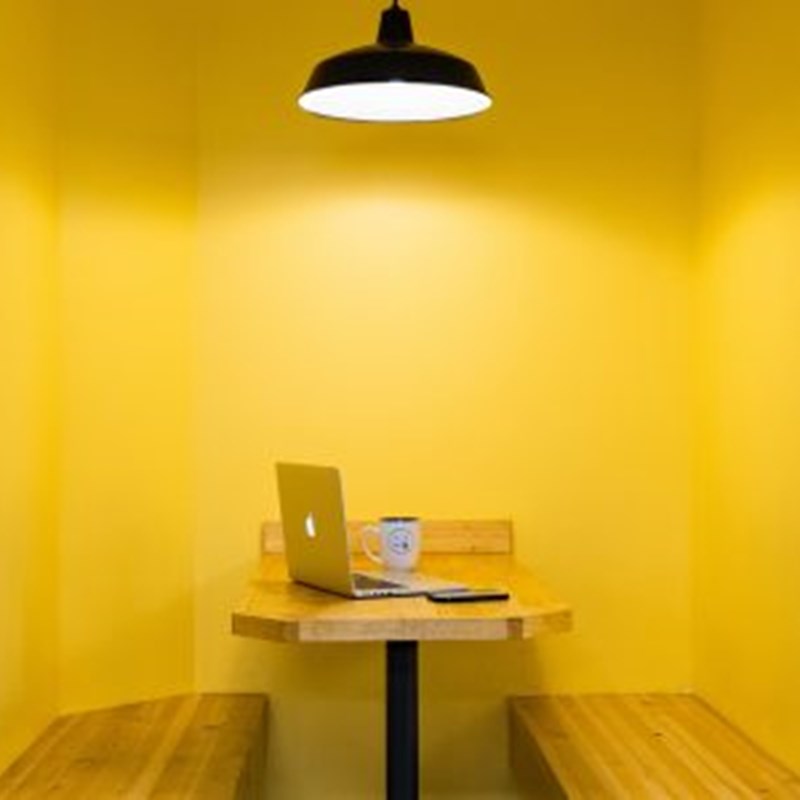
How comfortable are you right now? Harsh lighting straining your eyes? Air con making you think snow is imminent? Read on to find out how the offices of the future could be better tailored to meet the needs of the businesses and individuals that occupy them.
Smart offices – what are they?
Smart Offices, like any form of Smart Spaces, are environments where technology has been installed to improve efficiency, safety and comfort.
Office spaces, and the requirements of the companies and employees occupying them, have changed greatly over the last 20 years. Remote working is becoming ever more popular, shared working spaces more common. Inbuilt sensors monitoring environmental controls, security, maintenance schedules and. equipment can all help to improve employee well-being, increase productivity and help businesses to save money and achieve their green goals.
Sensors, apps, beacons, bots …
The modern world requires flexibility. With sensors installed, companies will be able to improve how their office space is used. Perhaps there are rooms which are empty much of the time that could be sublet to bring in extra revenue. With online booking systems, rooms could be rented out for hours or days instead of contracts being drawn up for long leases.
Keeping offices clean and equipment functional will be easier to manage. Data obtained from sensors will show how often different spaces are used and as a result, how often they require cleaning. Time won’t be wasted on cleaning a space that hasn’t been used. Cleaning robots will become commonplace; a study by Markets and Markets reports that the cleaning bot market will be worth $4.34 billion by 2023.
Sensors can monitor equipment. If a laptop is working less efficiently or errors are likely to occur, an alert will trigger a replacement or maintenance.
Overflowing desks, rooms full of filing and storing of data on a computer will all become things of the past. IoT-powered devices enable most functions to be carried out via the internet and data to be stored via the cloud. Shared workspaces are becoming more common but by using software such as a hot desking application to structure resources, office space, furniture and devices, extra space can be used more effectively. Colleagues can work together from hundreds of miles apart with ease; not only can data be accessed anywhere, communication apps such as Slack allow individuals and teams to communicate efficiently.
Over time, sensors will provide detailed analytics to build up a picture of how an office space is used. How many desks are needed, what level of lighting, what temperature the heating should be. Data will allow more appropriate ambient settings, and any required changes will be quick and easy. Whilst stacks of family photos might no longer grace desks, personalisation will be possible. Studies show that employees are happiest and more productive when they have some say in the design of their workspace. Pot plants and natural images lift moods. Smart tech will ensure personalised employee comfort; desks and chairs will adjust according to a specific individuals biometrics and computer screens and desk lighting will adjust automatically to their needs.
Smart safety
Most workplaces already have many safety protocols and procedures and some of these may already fall under the umbrella of smart tech. Offices of the future will be able to go beyond scanning passes to access a building or room. Sensors will be able to identify everyone in a building, invaluable in a fire or other emergency situation. Apps and tools that can monitor employees biometrics mean that the safety and wellbeing of every individual can be tracked. Companies will be able to encourage active working, helping remind staff to take screen breaks, to move around, to change from a seated position to a standing desk.
Smaller footprints..
Reducing carbon footprints is an essential component of any global business strategy. The analytics smart tech provides will mean it is easier than ever to make this possible. Heat, lighting, space, time, equipment – all of these can be optimised. In the future, AI powered energy storage software will be available for larger spaces such as manufacturing plants and their offices. Even more effective than solar panels, the carbon footprint of the whole electric grid is reduced.
Offices of the future will be working for us so we can get on, in comfort, with what really matters.
Subscribe to the Arkessa newsletter below to receive the next in this blog series straight to your inbox.
Coming next…
A guest blog from Pete Smith of IAConnects – a specialist in the Smart Buildings sector.